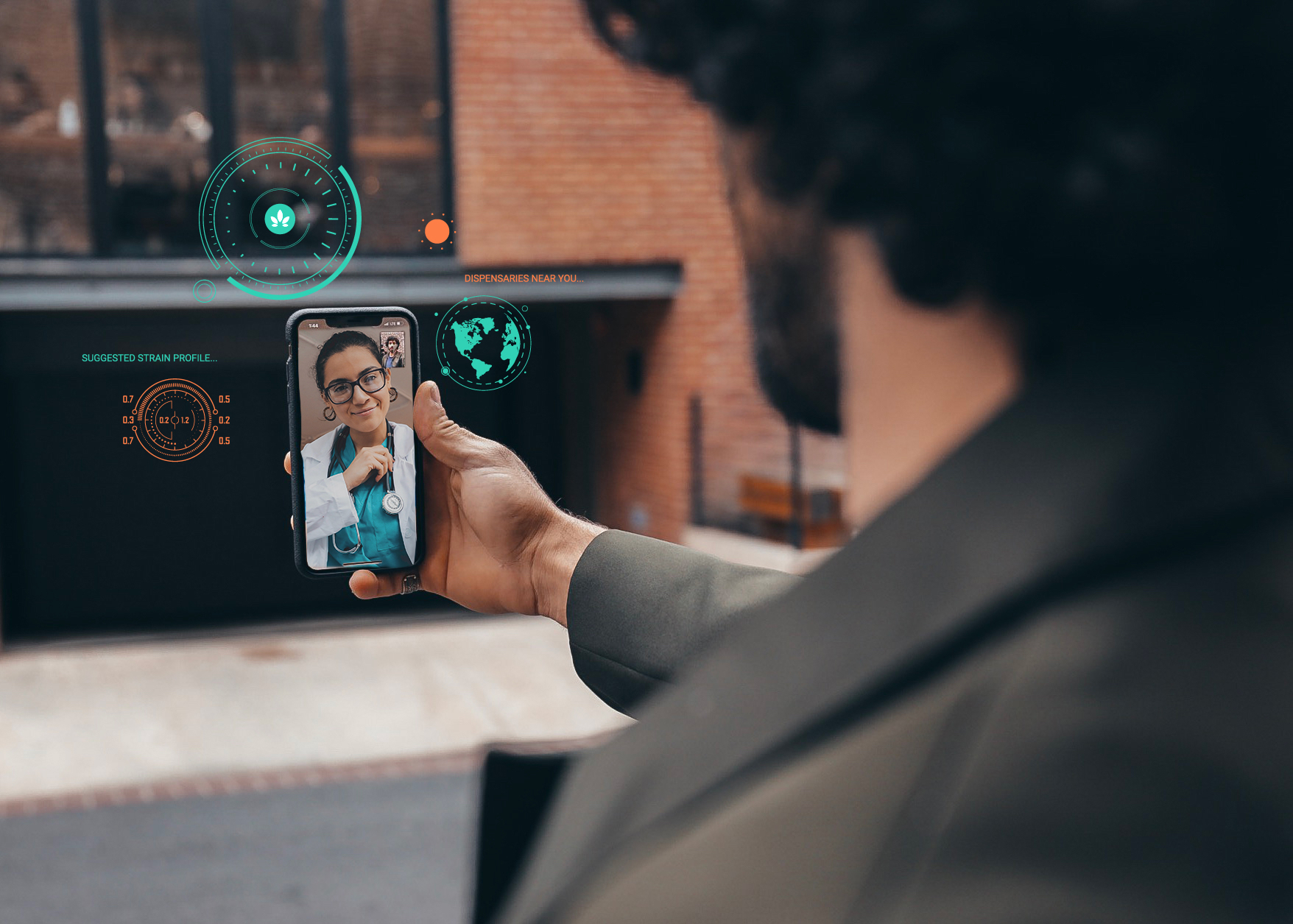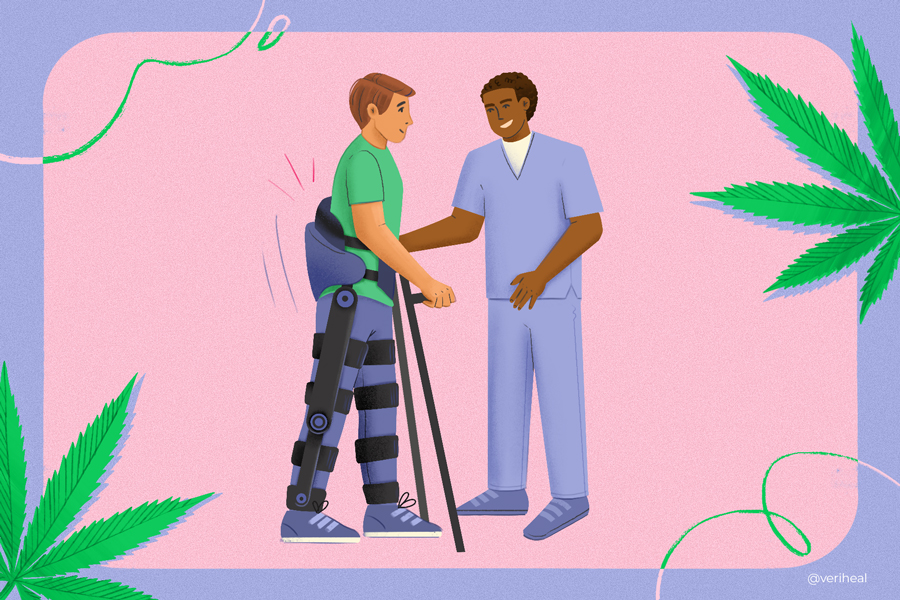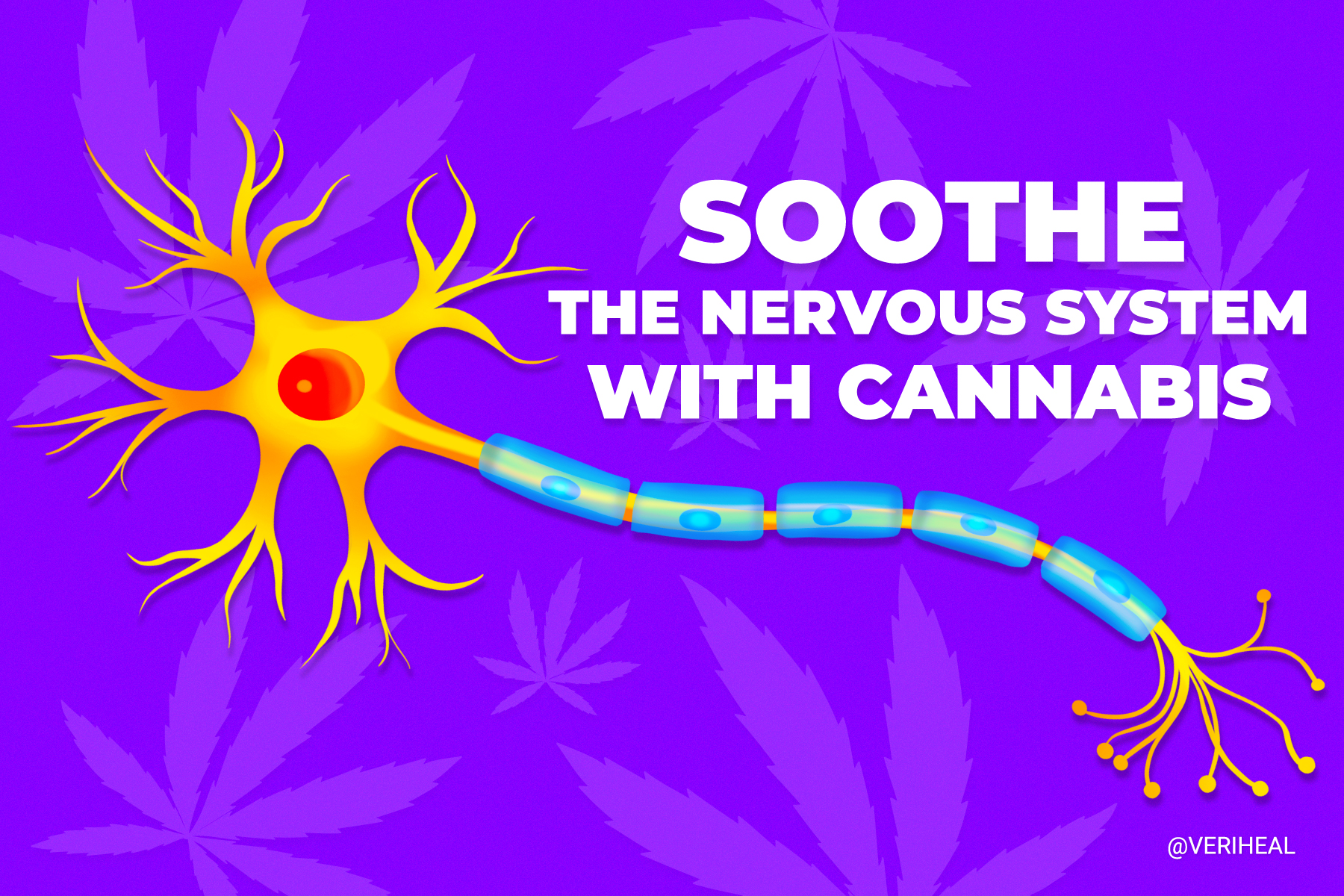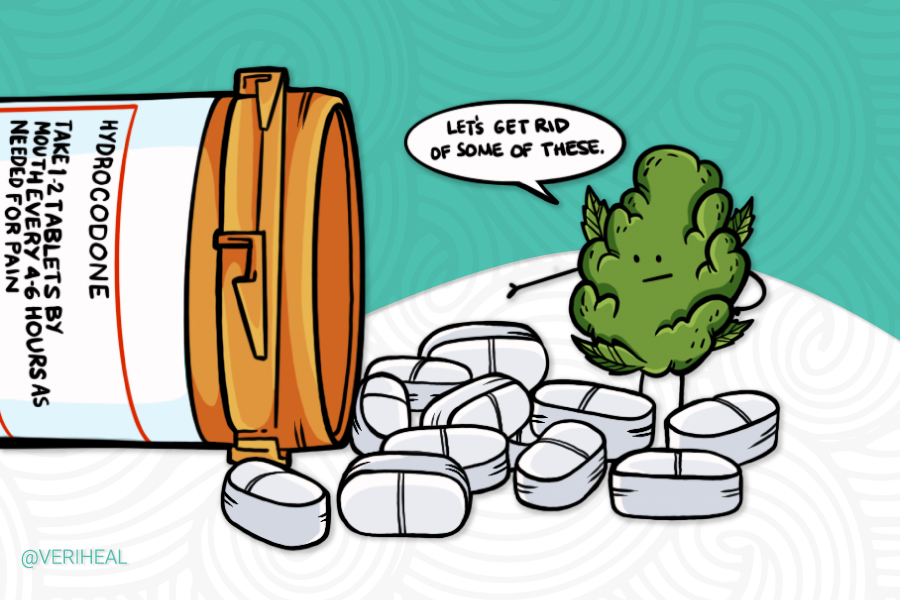Can Marijuana Be Used to Recover from a Spinal Cord Injury?
- Treating Spinal Cord Injuries with Medical Marijuana
- Different Treatment Recommendations for Spinal Cord Injuries
- Spinal Cord Injury and CBD: Considerations to Keep in Mind
- Understanding the Different Types of Spinal Cord Injuries
- Spinal Cord Injury Grades
Research has shown that medical cannabis interacts with the body to help relieve chronic and neuropathic pain, insomnia, mood disturbances, and other symptoms that plague patients who have experienced a spinal cord injury (11). The body produces endocannabinoids or fat-based neurotransmitters that function in the body to control pain and psychological symptoms and to modulate the immune system to reduce inflammation.
Cannabis interacts and can help modulate the endocannabinoid system through cannabinoid receptors CB1 and CB2 in the body. CB1 receptors are typically found in the central nervous system, while CB2 receptors are found in the peripheral nervous system, or nerves in the arms and legs.
Many patients who have a spinal cord injury (SCI) may not ever regain full movement or sensation in the parts of the body below where the injury to the spine occurred. In addition to being fully or partially paralyzed, these patients often experience additional chronic symptoms like spasticity that can greatly reduce their quality of life. Medical marijuana is a good treatment option for patients who worry about the side effects of traditional pain medications and who are looking for pain relief. Always speak with a doctor or qualified healthcare professional before trying medical cannabis as attention should be paid to possible drug interactions.
For more information on how the endocannabinoid system works, please see our page on endocannabinoids here.
Treating Spinal Cord Injuries with Medical Marijuana
While there is no cure for patients who have a spinal cord injury (SCI) and experience partial or full paralysis, cannabis can help provide relief from a variety of symptoms that can leave these individuals feeling trapped in their own bodies. Medical cannabis can help patients with the following symptoms:
- Controlling chronic pain without opioids. Cannabis does not cause constipation and suppressed breathing like opioid pain medications (4).
- Helps eliminate neuropathic or nerve pain by eliminating inflammation (8). It is considered an analgesic.
- Can help control muscle spasms and the pain caused by them (4).
- Relieves the anxiety and depression associated with having a chronic medical condition (11).
- Improves sleep by helping patients fall asleep and stay asleep (11).
Different Treatment Recommendations for Spinal Cord Injuries
It is important to start with smaller cannabis doses and work up. Look for cannabis strains that are lower in Δ9-tetrahydrocannabinol (THC) but high in cannabidiol (CBD) and cannabinol (CBN) (4). It may be beneficial to keep a log tracking dosing and symptom relief. You do not have to feel the psychoactive effects of marijuana to have health benefits from it.
Smoking cannabis is not a recommended choice for people who have compromised breathing from their spinal cord injuries (4). Regardless of what smoke is from, it can irritate the lungs of some individuals, especially those with existing breathing issues (6). However, vaporizing is a safer alternative to smoking along with taking tinctures. It can be difficult to get precise doses of cannabis with edibles, and they take longer to start relieving pain, but the effects typically last longer than inhaling cannabis. Check out our article on what you can do with cannabis besides smoking it to learn more.
Spinal Cord Injury and CBD: Considerations to Keep in Mind
Even if you live in a state that has recreational cannabis dispensaries available, it is important to talk with a doctor because many medical strains have higher concentrations of CBD and other cannabinoids and lower concentrations of THC (4).
People living with spinal cord injuries benefit the most from having a supportive, multidisciplinary team of rehabilitation specialists including neurologists, speech and language pathologists, and physical therapists. The cannabis plant may be a useful adjunctive medicine to help treat persistent symptoms caused by spinal injuries.
Understanding the Different Types of Spinal Cord Injuries
There are two main categories of spinal cord injuries (SCI) that include a complete SCI and an incomplete SCI. Spinal cord concussions may cause motor and sensory functioning problems as well. Information about different types of injuries can be seen below (12):
Complete Spinal Cord Injury
- A complete SCI is characterized by a total loss of motor function and sensory function, including pain, below the level of where the injury occurred.
- Even when a patient has a complete SCI, the spinal cord is rarely cut. Most patients experience the loss of function or paralysis from an injury to the spinal cord that causes a bruise or some other injury that causes blood flow issues to that area of the spine.
Incomplete SCI
- The patient will have some sensory and motor function below the spinal cord injury. For example, some patients may be able to move an arm or leg, or they may even have more function on one side of the body versus the other.
Spinal Concussion
- A spinal concussion can also be considered complete or incomplete, but it typically is a spinal injury that has symptoms that resolve within 2 days.
- Spinal cord concussions are common in football players.
Spinal Cord Injury Grades
SCIs are graded using the American Spinal Injury Association (ASIA) grading scale to describe the severity of the injury (12):
- ASIA A – is a complete SCI with no sensory or motor function preserved.
- ASIA B – injury with complete motor function loss, but still has some sensory function.
- ASIA C – is an incomplete motor function injury where there is some movement but less than 50% of the muscle groups are anti-gravity or can lift against the force of gravity with full range motion.
- ASIA D – is an incomplete motor function injury but more than 50% of the muscle groups are anti-gravity.
- ASIA E – normal motor and sensory function.
Note: Veriheal does not intend to give this as professional medical advice. Do not attempt to self-diagnose or prescribe treatment based on the information provided on this page. Always consult a physician before making any decision on the treatment of a medical condition.
1.Boldt, I., Eriks-Hoogland, I., Brinkhof, M. W., de Bie, R., Joggi, D., & von Elm, E. (2014). Non-pharmacological interventions for chronic pain in people with spinal cord injury. The Cochrane database of systematic reviews, (11), CD009177. https://pubmed.ncbi.nlm.nih.gov/25432061/
2. Bourke, J. A., Catherwood, V. J., Nunnerley, J. L., Martin, R. A., Levack, W., Thompson, B. L., & Acland, R. H. (2019). Using cannabis for pain management after spinal cord injury: a qualitative study. Spinal cord series and cases, 5, 82. https://www.nature.com/articles/s41394-019-0227-3
3. Campbell, G., Hall, W. D., Peacock, A., Lintzeris, N., Bruno, R., Larance, B., Nielsen, S., Cohen, M., Chan, G., Mattick, R. P., Blyth, F., Shanahan, M., Dobbins, T., Farrell, M., & Degenhardt, L. (2018). Effect of cannabis use in people with chronic non-cancer pain prescribed opioids: findings from a 4-year prospective cohort study. The Lancet. Public health, 3(7), e341–e350. https://www.thelancet.com/journals/lanpub/article/PIIS2468-2667(18)30110-5/fulltext
4. Carter, G. T., MD, MS. (2014). 2014 spinal cord Injury WELLNESS SUMMIT. Retrieved February 17, 2021, from http://sci.washington.edu/summit2014/medical_marijuana.asp
5. Drossel, C., Forchheimer, M., & Meade, M. A. (2016). Characteristics of Individuals with Spinal Cord Injury Who Use Cannabis for Therapeutic Purposes. Topics in spinal cord injury rehabilitation, 22(1), 3–12. https://meridian.allenpress.com/tscir/article/22/1/3/85485/Characteristics-of-Individuals-with-Spinal-Cord
6. Fugh-Berman, A., MD, Wood, S., PhD, Kogan, M., MD, Abrams, D., MD, Mathre, M., RN, MSN, CARN, Robie, A., MEd, . . . D’Antonio,, P., RPh, MS, MBA. (n.d.). An Introduction to the Biochemistry & Pharmacology of Medical Cannabis. Retrieved July 13, 2021, from https://doh.dc.gov/sites/default/files/dc/sites/doh/publication/attachments/Medical%20Cannabis%20An%20Introduction%20to%20the%20Biochemistry%20and%20Pharmacology.pdf
7. Hawley, L. A., Ketchum, J. M., Morey, C., Collins, K., & Charlifue, S. (2018). Cannabis Use in Individuals With Spinal Cord Injury or Moderate to Severe Traumatic Brain Injury in Colorado. Archives of physical medicine and rehabilitation, 99(8), 1584–1590. https://www.archives-pmr.org/article/S0003-9993(18)30154-0/fulltext
8. Hill, K. P., Palastro, M. D., Johnson, B., & Ditre, J. W. (2017). Cannabis and Pain: A Clinical Review. Cannabis and Cannabinoid Research, 2(1), 96–104. https://www.liebertpub.com/doi/10.1089/can.2017.0017
9. Piper, B. J., DeKeuster, R. M., Beals, M. L., Cobb, C. M., Burchman, C. A., Perkinson, L., Lynn, S. T., Nichols, S. D., & Abess, A. T. (2017). Substitution of medical cannabis for pharmaceutical agents for pain, anxiety, and sleep. Journal of psychopharmacology (Oxford, England), 31(5), 569–575. https://journals.sagepub.com/doi/10.1177/0269881117699616
10. Rahn, E. J., & Hohmann, A. G. (2009). Cannabinoids as pharmacotherapies for neuropathic pain: from the bench to the bedside. Neurotherapeutics : the journal of the American Society for Experimental NeuroTherapeutics, 6(4), 713–737. https://link.springer.com/article/10.1016/j.nurt.2009.08.002
11. Sarris, J., Sinclair, J., Karamacoska, D., Davidson, M., & Firth, J. (2020). Medicinal cannabis for psychiatric disorders: a clinically-focused systematic review. BMC psychiatry, 20(1), 24. https://www.ncbi.nlm.nih.gov/pmc/articles/PMC6966847/
12. Spinal cord injury. (n.d.). Retrieved February 17, 2021, from https://www.aans.org/en/Patients/Neurosurgical-Conditions-and-Treatments/Spinal-Cord-Injury
13. Spinal cord injury information page. (n.d.). Retrieved February 17, 2021, from https://www.ninds.nih.gov/Disorders/All-Disorders/Spinal-Cord-Injury-Information-Page
14. Stillman, M., Capron, M., Mallow, M., Ransom, T., Gustafson, K., Bell, A., & Graves, D. (2019). Utilization of medicinal cannabis for pain by individuals with spinal cord injury. Spinal cord series and cases, 5, 66. https://www.nature.com/articles/s41394-019-0208-6
15. The Premier North American organization in the field of spinal cord INJURY care, education, and research. (n.d.). Retrieved February 17, 2021, from https://asia-spinalinjury.org/

















